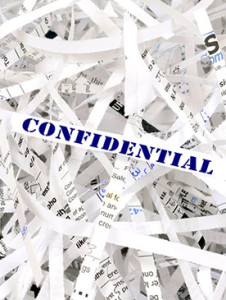 Document Shredding Basics
Document Shredding Basics
According to the Bureau of Justice Statistics, 16.6 million Americans aged 16 years or older experienced identity theft in 2012, with financial losses totaling $24.7 billion. And the 2014 Identity Fraud Study, conducted by Javelin Strategy & Research, a financial services research and consulting company, estimated that 13.1 million people became victims of identity theft in 2013.
When done correctly, document shredding is the ultimate security measure to protect your sensitive personal and business information from falling into the hands of identity thieves. Few CPAs, doctors or attorneys would toss files into a dumpster without first shredding them to protect their clients’ sensitive personal information. Imagine the crisis that could occur if personal banking information, Social Security or business tax identification numbers fell into the wrong hands!
In recent years there have been a number of highly publicized reports of security breaches among some of the nation’s largest corporations and government agencies. The problem has become so serious that many business agreements between clients and vendors now include the assurance that all proprietary documentation is shredded or otherwise destroyed once the data contained within is no longer needed.
Here are some examples of documents that require shredding:
-
- Engineering schematics, drawings, plots and plans
- Legal documents
- Archival classified government information
- Personnel records of employees
- Medical records
How to Choose a Document Shredding Company
When selecting a shredding company, keep in mind that no two are exactly alike. Here are some things to consider when choosing a shredding company for your business.
Document Shredding Services
Here are some things to consider when shopping for shredding services for your business.
Most document shredding companies offer on-site, also known as mobile shredding, and off-site services. With on-site shredding, all of your confidential materials are shredded at your location. Off-site shredding involves transporting of your materials to the company’s facilities for shredding. Off-site shredding is typically the more cost-effective method, but if your organization requires that you oversee the shredding process, on-site shredding is the option for you.
In addition to document shredding, many shredding companies also offer other, related services including:
- Hard drive destruction services
- Purge services
- Product destruction services
- eDestruction services
Companies that offer a wide variety of services typically have the expertise and equipment necessary to handle your changing needs. Many shredding companies also provide secure shredding bins that can be dropped off at your location and collected and processed on a routine basis.
Document Security
Regardless of your specific needs, be sure to choose a NAID AAA certified shredding company. NAID (National Association for Information Destruction) members are audited for mobile and/or plant-based operations in paper or printed media, micro media, computer hard drive destruction, and/or computer hard drive sanitization. Depending on your industry, you may also need to verify that the shredding company you’re considering adheres to HIPAA regulations.
Another thing to consider is how the company ultimately disposes of your shredded materials. A growing number of shredding companies recycle instead of disposing of shredded materials in local landfills. In addition to being better for the environment, recycling provides an extra level of data security.
Customer Service
As is the case when shopping for any business, be sure to consider the shredding company’s commitment to customer service. Locally owned and operated shredding companies with deep roots in your local community tend to offer a higher degree of customer service than large regional and nationwide companies.

